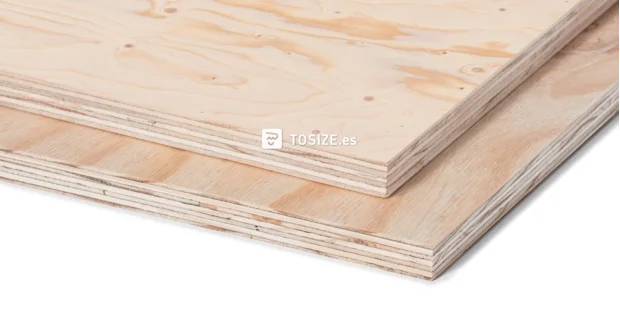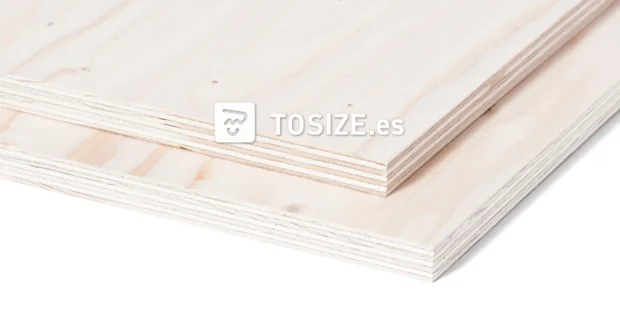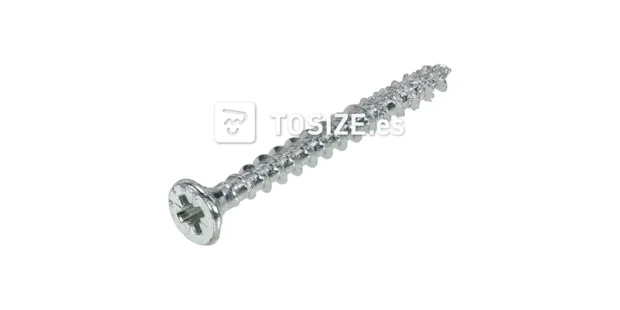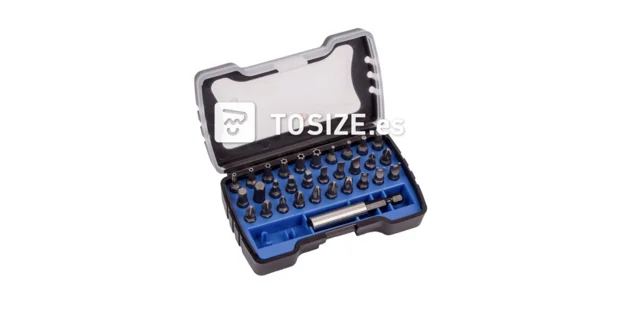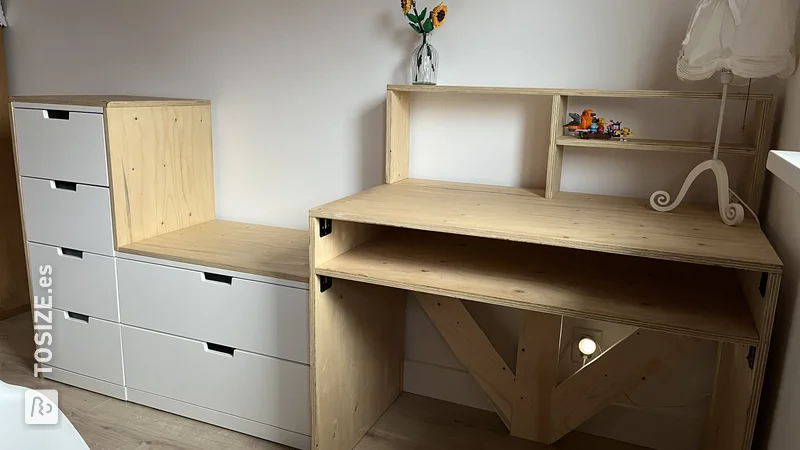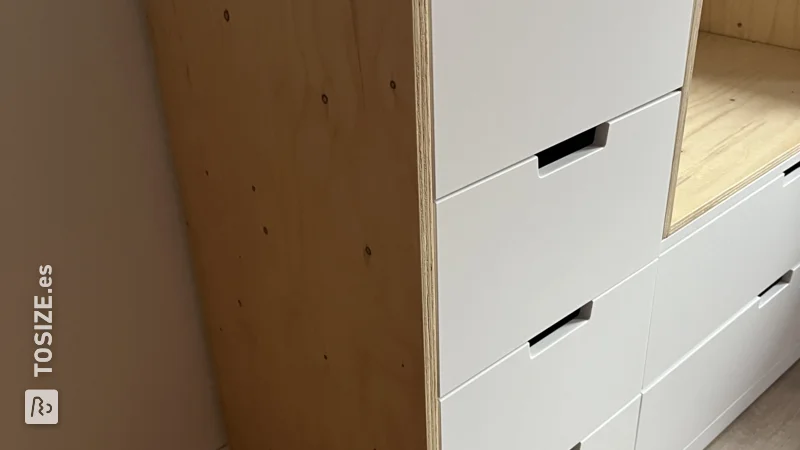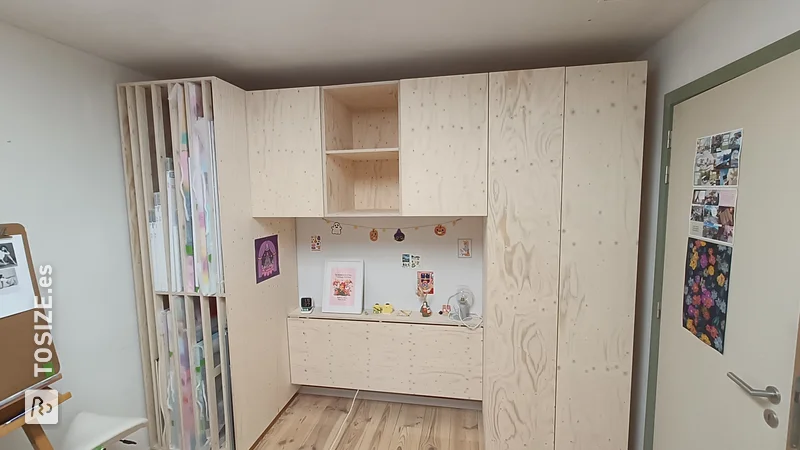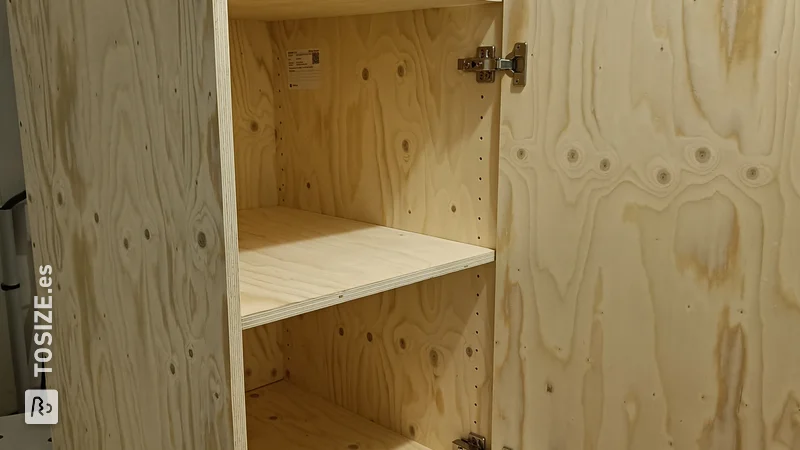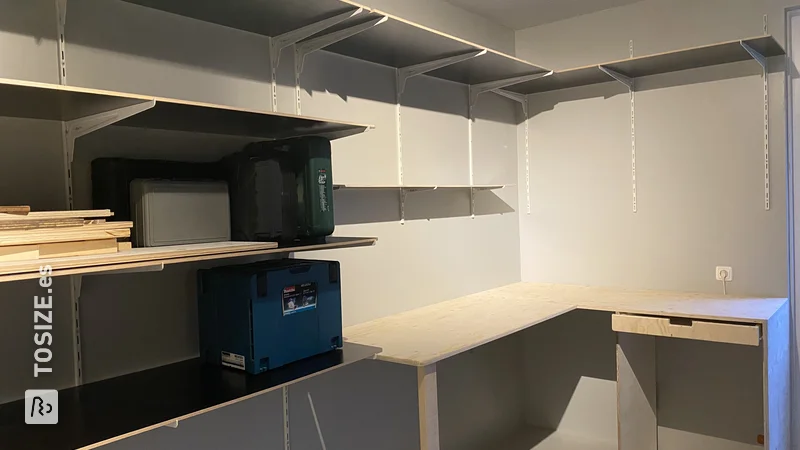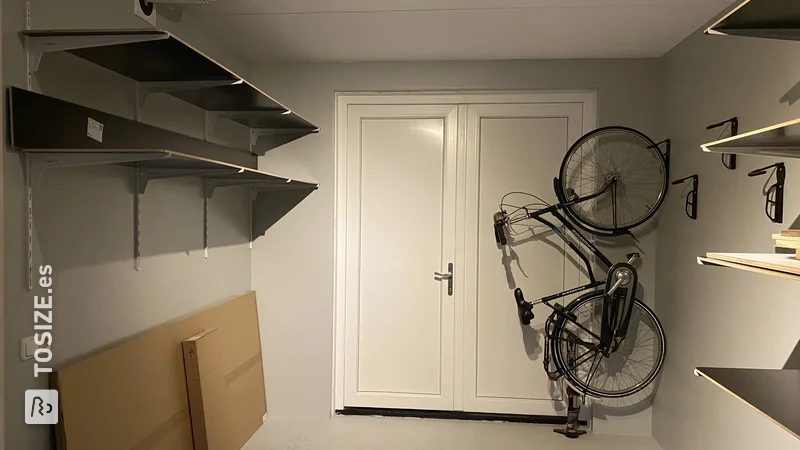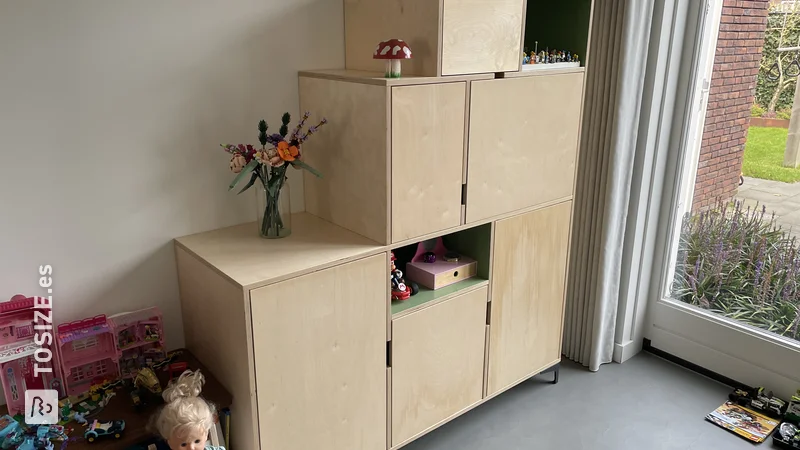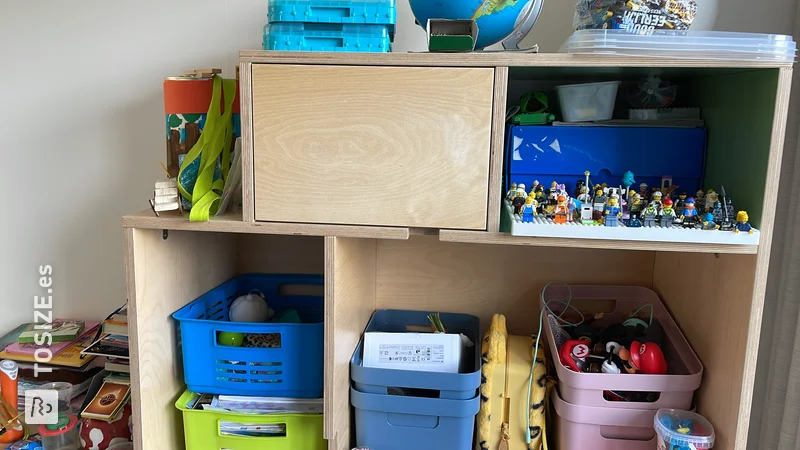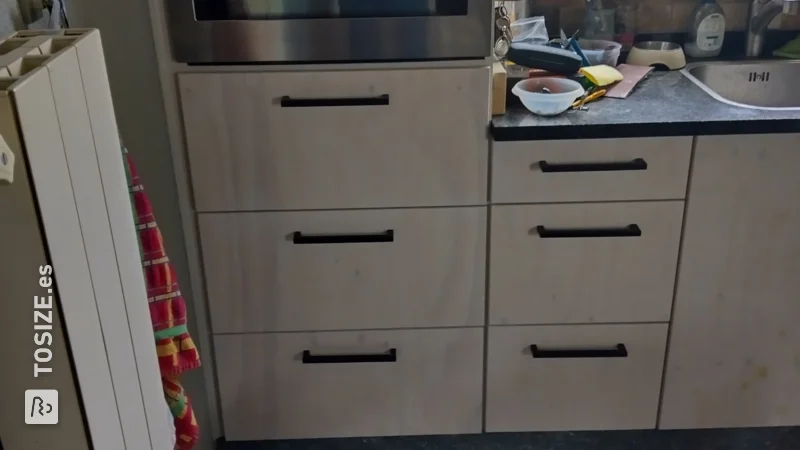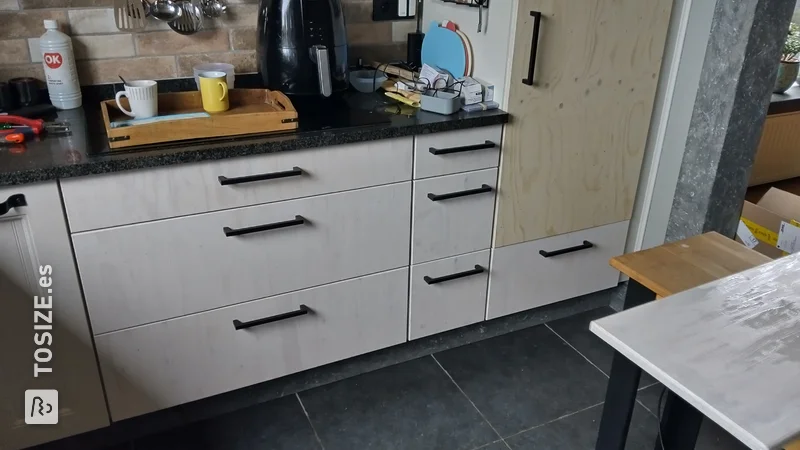- TOSIZE.es
- Wood and sheet material
- Underlayment
Underlayment Finnish Pine
Product information
- Light and strong sheet material
- Easy to process
- Budget-friendly material for structural applications
- Boards are not suitable for visible quality
- Thinner variants can warp faster
- The edges can break out
Description
Underlayment Finnish pine is a plywood made from Finnish pinewood. It is widely used for constructions and is therefore also called construction plywood. It is very suitable for making floors because of its high bending strength. The clear colour and the beautiful wood grain ensure that the material can also be used decoratively.
Configure Underlayment Finnish Pine
How convenient is that
Product information
- Light and strong sheet material
- Easy to process
- Budget-friendly material for structural applications
- Boards are not suitable for visible quality
- Thinner variants can warp faster
- The edges can break out
Description
Underlayment Finnish pine is a plywood made from Finnish pinewood. It is widely used for constructions and is therefore also called construction plywood. It is very suitable for making floors because of its high bending strength. The clear colour and the beautiful wood grain ensure that the material can also be used decoratively.
Product properties
Applications
- Indoor applications
- Floors
- Roofs
- Constructions
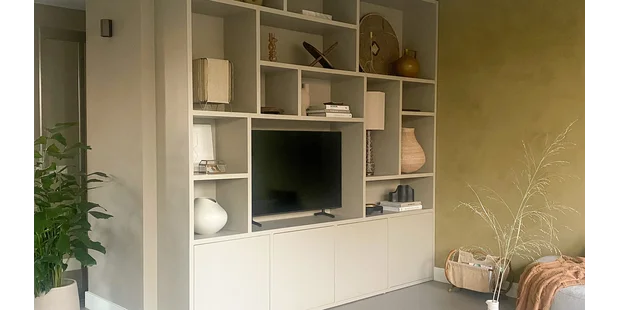
Order cut-to-size underlayment Finnish pine sheets online
Bring the Scandinavian interior style into your home with Finnish pine. Easily order cut-to-size underlayment Finnish pine sheets online. Underlayment can be cut or milled to size into various shapes. The most commonly chosen shape is a rectangle, but we also mill circles, ovals, hexagons or even parallelograms for you. Do you want to have your do-it-yourself project neatly finished? Then choose one of the available (edge) finishes.
Underlayment Finnish pine: what is it?
Underlayment Finnish spruce is a plywood made from Finnish spruce. Underlayment has some unique properties compared to other board material. It also has relatively little structure. In addition, this board material is strong, resilient and can support a lot of weight. Underlayment Finnish spruce is a light, whitish to cream type of wood. The light pattern of the softwood gives it a natural appearance. This board material is also called Pellos Floor. Our underlayment boards are only suitable for horizontal applications, for example table tops, window sills, etc. For vertical projects such as doors and room dividers, these boards are not suitable.
Like other types of plywood, underlayment Finnish spruce consists of several layers of wood veneer. These layers are glued together crosswise, making the board strong. This results in a stable board.
The direction of the wood grain
Underlayment shows a wood grain. The wood grain pattern always runs in the longitudinal direction. When sawing the sheet, we maintain that the longitudinal dimension is also the longitudinal direction of the wood grain. So be careful when filling in the measurements, so that the flames of the wood grain all run in the right direction!
Visibility quality underlayment II/III
The quality of plywood surface layers is indicated by letter combinations. There is a letter designation for the visible side (top) and one for the reverse side (bottom). This refers to the quality of the top veneer; the quality of the gluing, for example, is indicated differently. B/BB is an example of a common quality, which can be used for decorative applications. In this, the first letter (in this case B) means the quality of the visible side and the second letter (in this case BB) means the quality of the reverse side. Read here more about all viewing qualities.
This board material also has two viewing sides. It is marked II/III. The top side has sight quality II, this sight quality depends on the batch and is between B and BB quality. With BB-quality veneers, propping is allowed. These are small cut-outs from the veneer that are replaced by a flawless piece of veneer. So propping is a way of repairing defects. (filled) knots, repairs in the veneer and visible colour differences are allowed in this type of panel as well.
The underside is coarser. This has sight quality III, also known as BBB-quality. BBB grade generally involves repaired cover veneers. Small, open defects, pit knots and colour differences are allowed. Brushes and sapwood may be present, or repaired with liquid wood. This is therefore a coarse overlay, not suitable for sight quality.
Available thicknesses of underlayment Finnish pine
Underlayment Finnish pine can be ordered in different thicknesses. You can easily specify your desired thickness during the ordering process. This way you can be sure that the sheet material meets your requirements: both the size and thickness of the material. The following thicknesses are available: 9 mm, 12 mm, 15 mm and 18 mm.
Machining underlayment Finnish pine sheets
Pinewood is easy to work with. This sheet material can discolour over time. Use oil, varnish or stain to prevent discolouration. Lightly sand the material before you start painting. The sheet edges may contain splinters, so pay extra attention to them. Finally, you can treat the sheet edges with an edge sealer, as these are very coarse. It is also important to pre-drill the sheet material. This is because the wooden sheets can split.
Specific applications of underlayment Finnish pine
Underlayment Finnish pine is a structural sheet and not suitable for decorative applications without a finish. If you finish the plate well, it is also suitable for furniture and other decorative applications. It is also extremely suitable for walls, floor coverings, mouldings, etc. Use the material only indoors, for long-term enjoyment of the sheet material.
In addition to sawing the material to size with millimetre accuracy, you can also choose from a variety of shapes and finishes. For example, if you have a round dining table in mind, choose the 'circle' shape, or opt for a rectangle with rounded corners. See the available shapes and finishes that apply to the product or see all the possibilities on the shapes or finishes page.
Alternatives to underlayment Finnish pine
Is underlayment Finnish pine not the right type of wood for your project after all? Then opt for OSB or MDF for instance.
Recommended combinations

